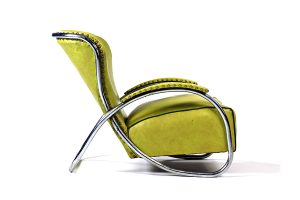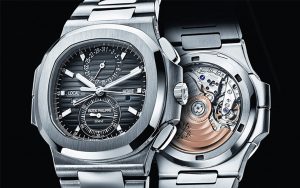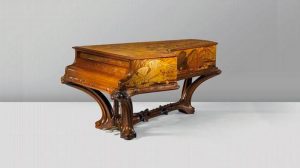A history of the life and work of Ludwig Mies van der Rohe, his design philosophy and his Barcelona chair designed in 1929
Ludwig Mies van der Rohe – life and reputation
Ludwig Mies van der Rohe was a was a German-American architect and designer born on the 27th March 1886 in the German town of Aachen. Mies passed away in Chicago on the 17th August 1969 aged 83 years old.
Mies’ father owned his own business in Aachen, he was a stone mason and this is where Mies went to work before he moved to Berlin. He is commonly referred to and was addressed simply as Mies. Along with Le Corbusier, Alvar Aalto, and Frank Lloyd Wright, Mies is widely regarded as one of the select group of pioneering masters of modern architecture, a true visionary.
Mies talent was broad, he had the ability to design products ranging from, cutting-edge buildings and modern furniture and even type fonts location is self explanatory.
Mies’ furniture
My favourite designs by Mies are his furniture pieces, his chairs in particular are so elegant and simple. They were the very essence of modern design in the 1920’ and 1930’s Europe even today their classic design is suitable for any modern interior.
The ‘Tugendhat’ chair below, was sold at Christie’s in June 2011 for an astonishing 116,000 USD. The chair was designed in 1929 for the Villa Tugendhat, which Mies designed for the Czechoslovakian Industrialist Fritz Tugendhat and his wife Grete. The chairs was manufactured by the Berlin master metal worker Josef Muller.
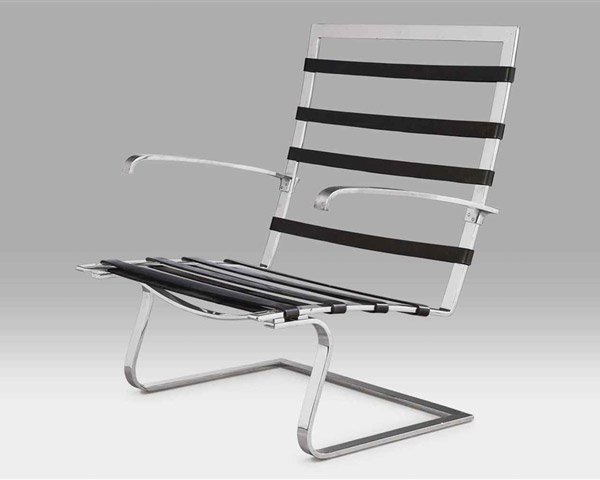
The Tugendhat chair by Mies
Mies’ philosophy and the Barcelona Chair
Mies had a phrase he loved, ‘skin and bones’ he meant by this that simple was best. This chair realises his philosophy perfectly, the flat bar stainless steel is the bones and the rubber bands are the skin. Less is more. This was an extremely popular and important idea at the time, one only has to think of Naum Gabo’s Constructed Head No. 2.
Then we come to the piece of furniture Mies is best known for the Barcelona Chair and Stool which Mies designed in 1929. Originally the piece was designed to furnish the German Pavilion at the 1929 International Exhibition in Barcelona. The Barcelona Chair and Stool have come to epitomise modern design and design clarity. Mies designed the Chair to serve as seating for the king and queen of Spain, while the Stool was intended to accommodate their attendants. Mies had designed a modern throne. He had removed the gold and jewels and the sheer massiveness of traditional thrones and replaced them with a light chromed steel and leather structure. The product was manufactured to the very highest standards. I am not sure that the king and queen had ever seen a chair designed along these lines, let alone sat on one.
The chair suited the prevailing mood and is still does. The chair was redesigned in the 1950’s in order to utilise stainless steel.
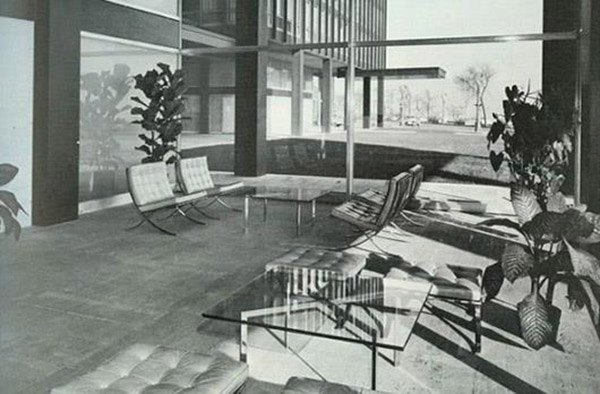
The Barcelona Chair grouped
The Barcelona chair today
As a testimony to Mies’ skilled design, the chair has never been out of production, it is made around the world by many companies, some are very well made, some just cheap shabby copies. The chair is still produced by Knoll to Mies’s original and exacting specifications of the designer. The Barcelona’s cushions – welting and buttons included – come from a single cowhide and are supported by cowhide belting straps, dyed to match the color of the chair. To create the deep, precise tufting, individual panels of leather are cut, hand welted and hand tufted. The chromed-steel frame is stamped with Ludwig Mies van der Rohe’s signature. Manufactured by Knoll according to the original and exacting specifications of the designer.
The Barcelona Chair and stool are meant to be used in pairs.
The early example below sold for 93,948 USD in May 1999. The chair was manufactured by Bamberg Metallwerkstätten Berlin, circa 1931. I love it.
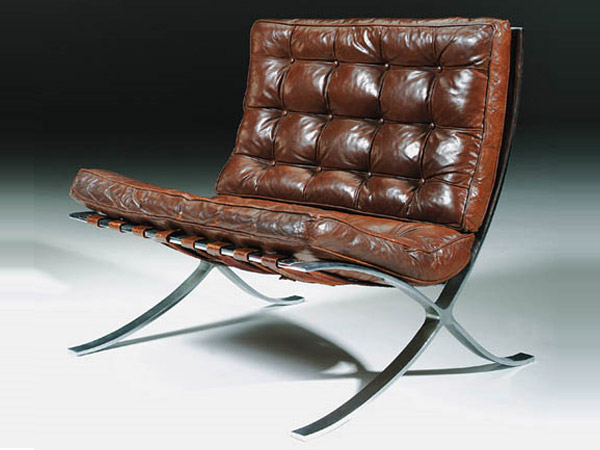
Barcelona chair 1931, manufactured by Bamberg Metallwerkstätten Berlin

